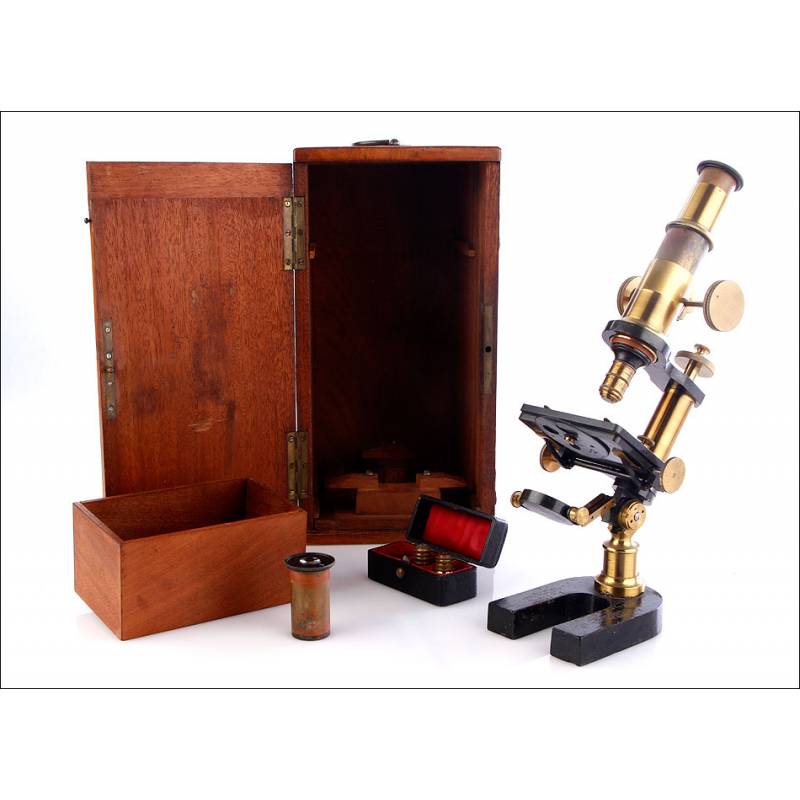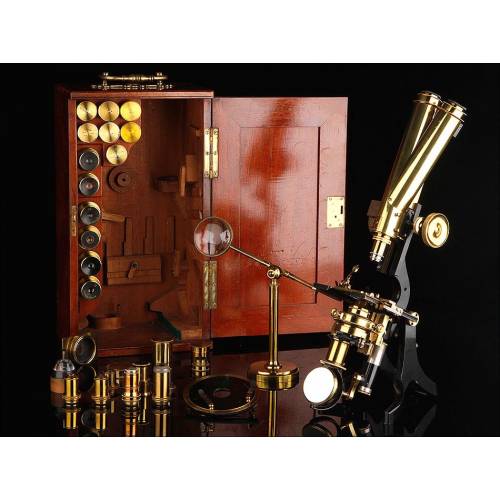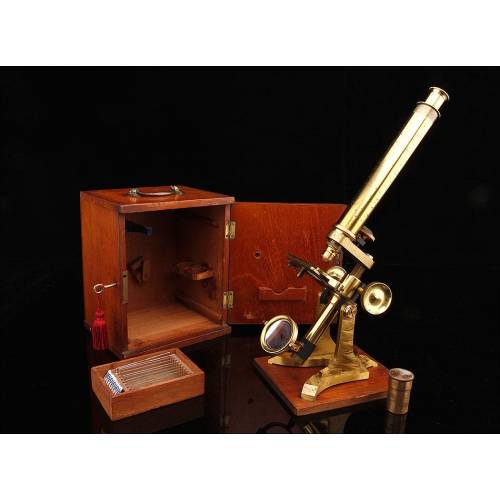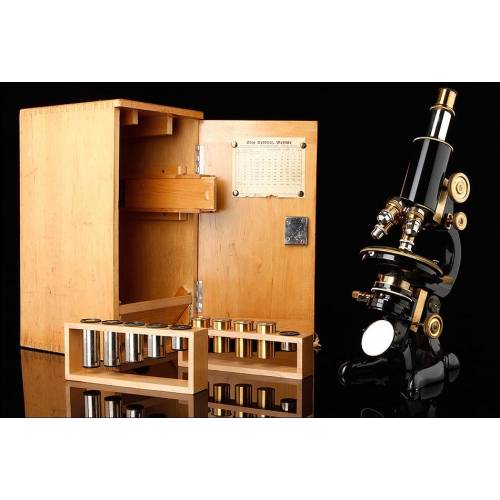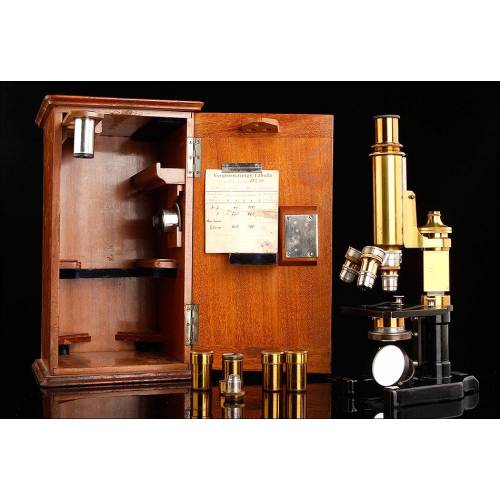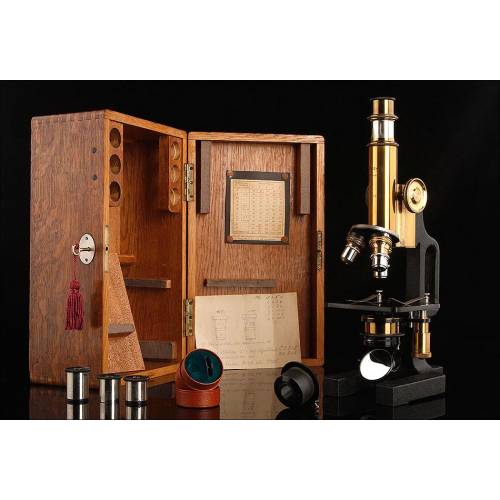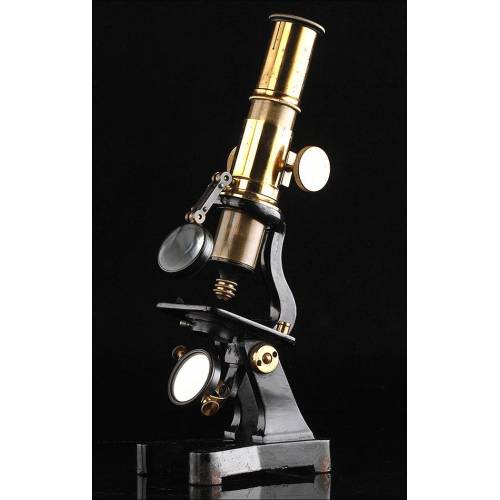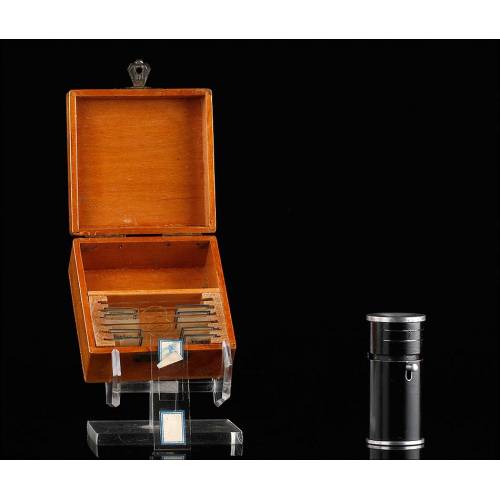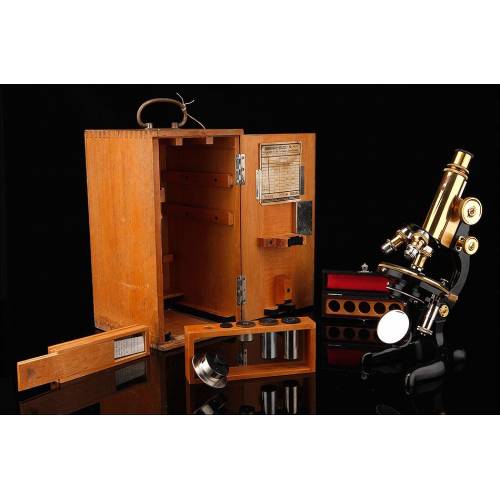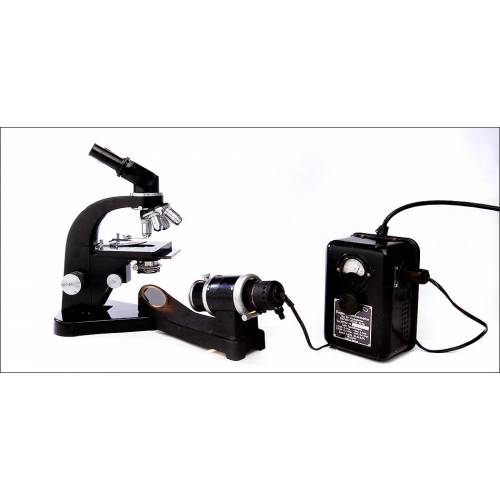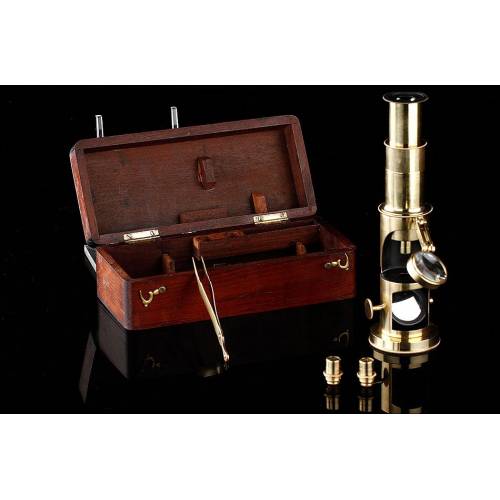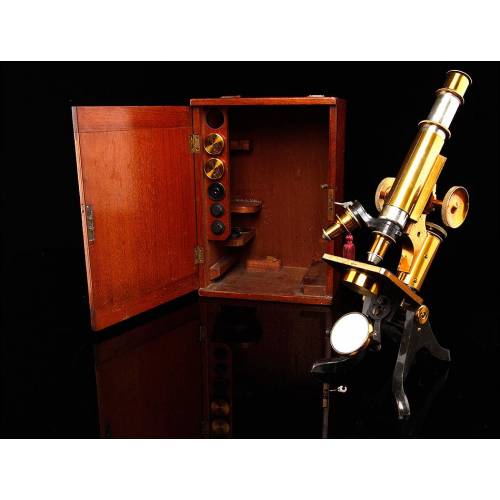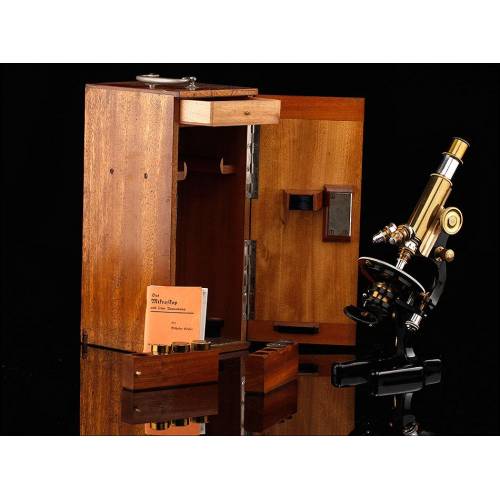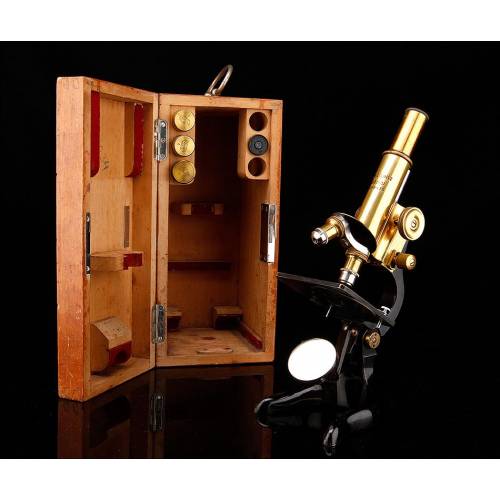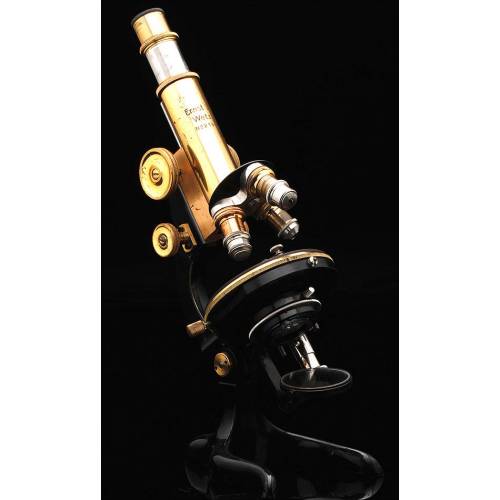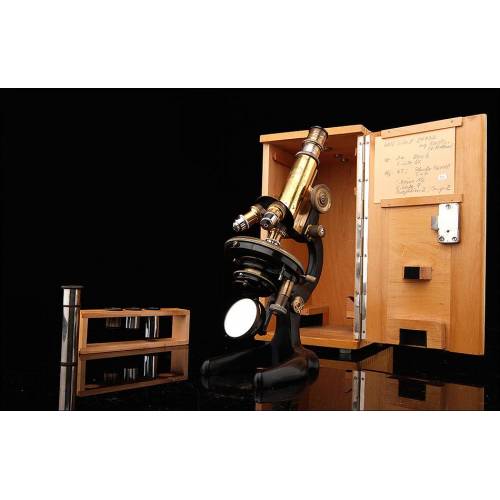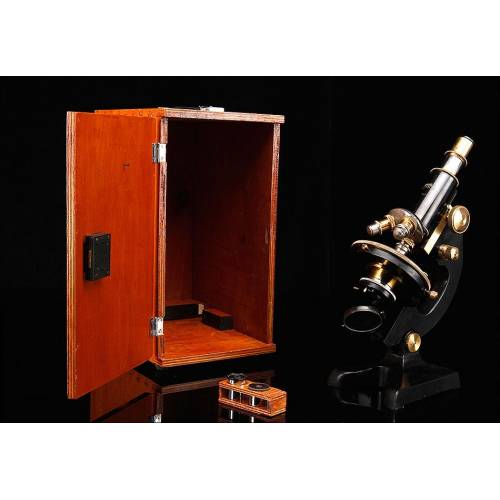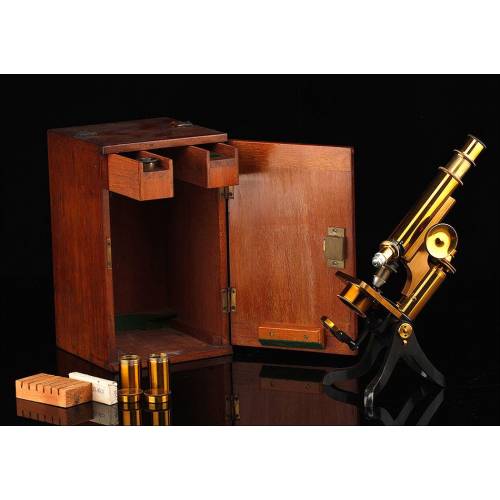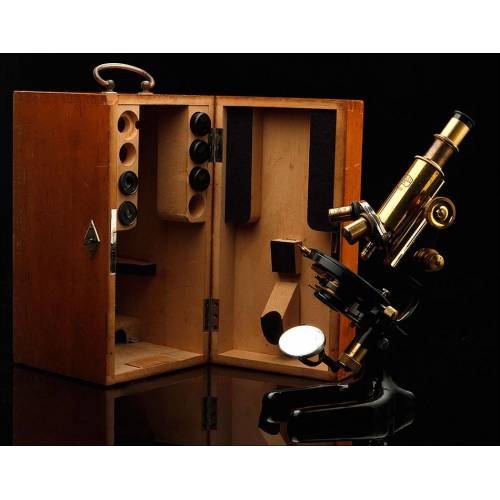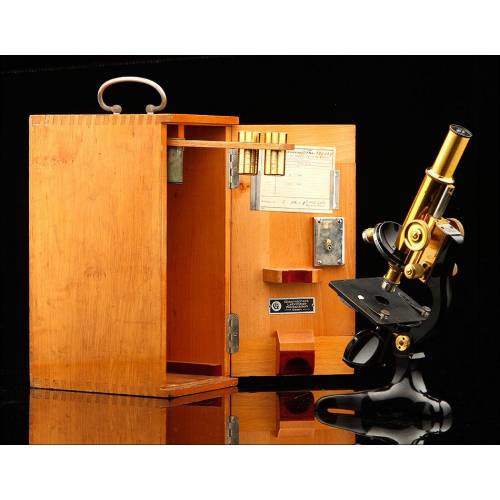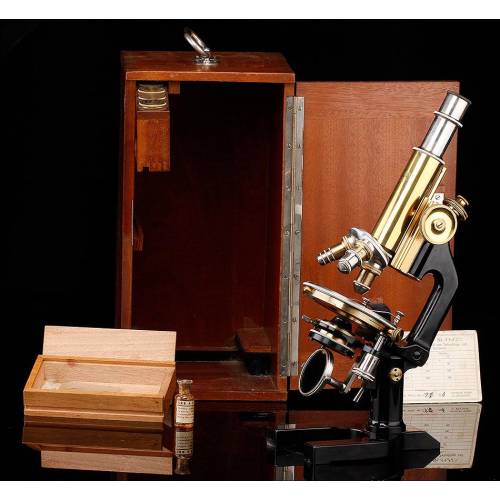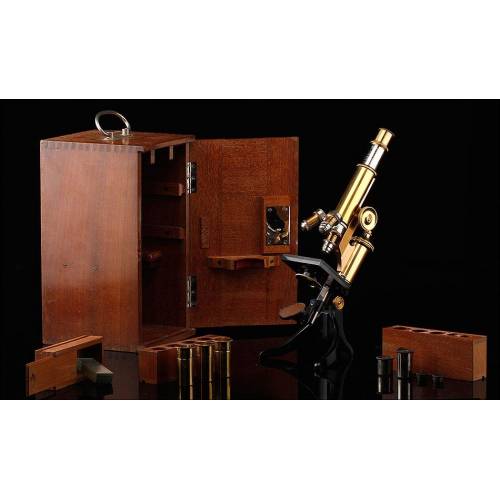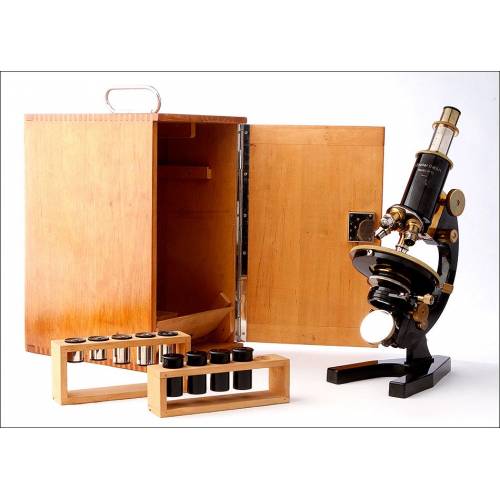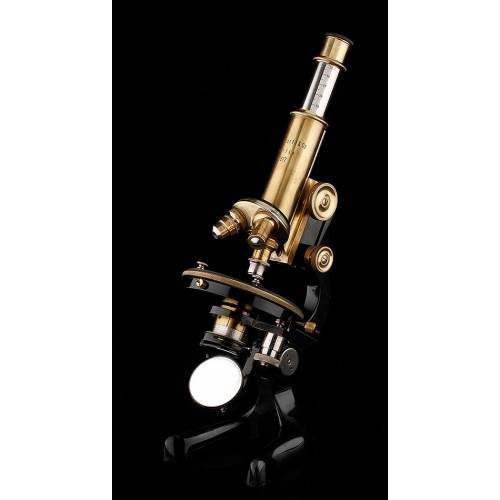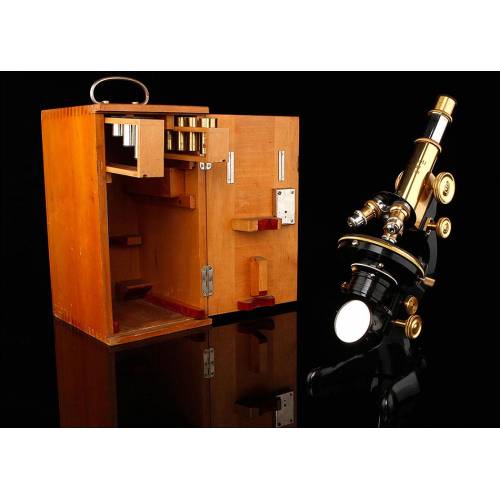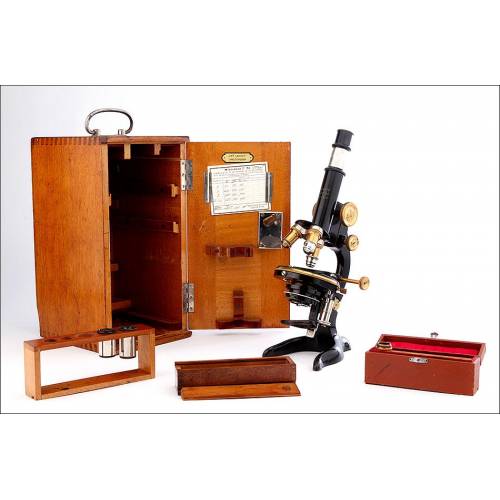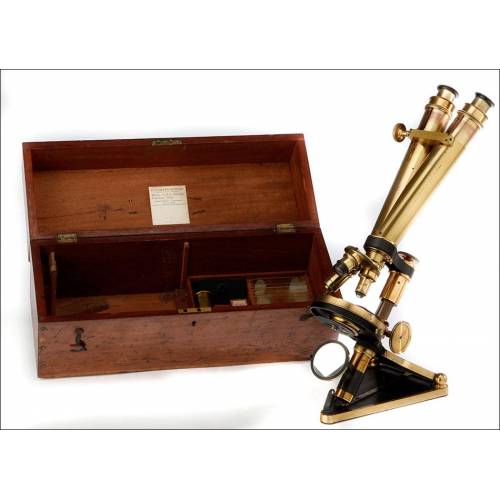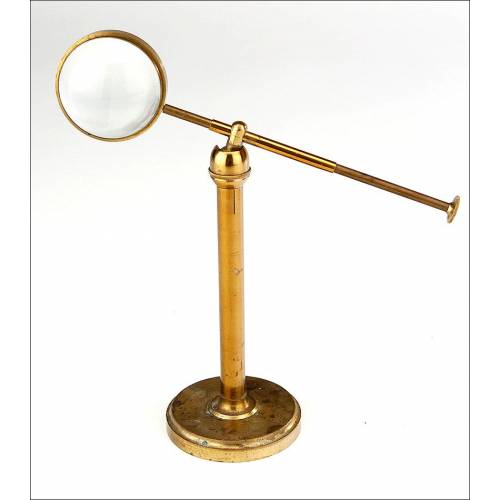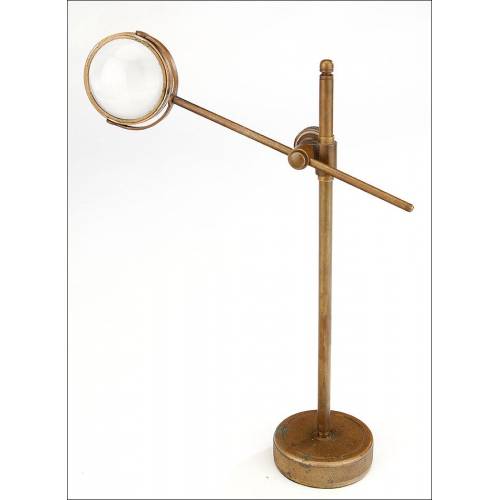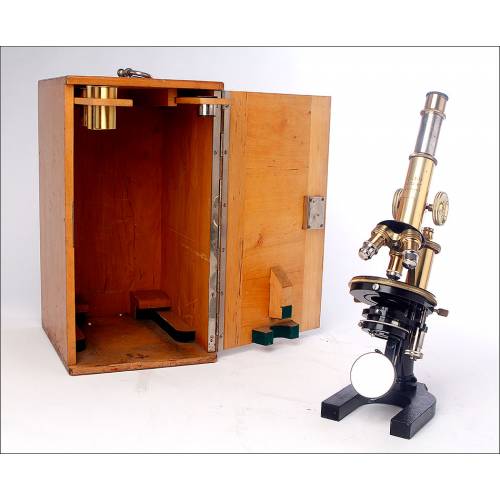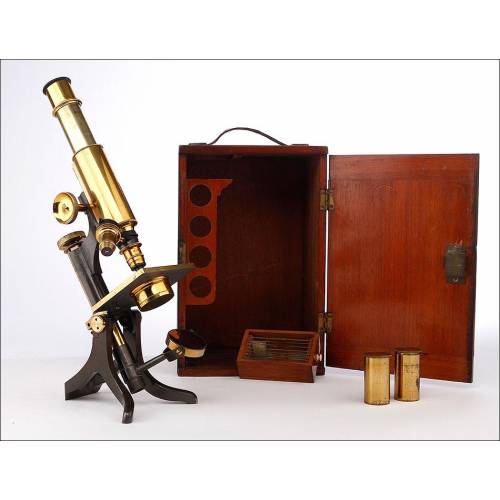C-228
Antique Nachet Microscope. Compound. 1900
Complete antique compound microscope preserved in its original case. Made of brass and cast iron. Probably made by Nachet.
Sold!
Beautiful antique Nachet compound microscope made in France in 1900, in very good condition and in its original wooden case. Nachet was one of the most famous and prestigious optic manufacturers Worldwide in those days. The item shows off a balanced and elegant beauty that together with its functionality (the microscope can be used to watch samples and specimens) turns it into a first-class article. It is made of brass, with black-lacquered cast-iron foot and sample plate; the combination of these materials and colors creates a very interesting piece. All the microscopes component parts and pieces are in amazing condition, with scarcely any sign of wear for such an ancient piece. The metal is protected by the original transparent lacquered finish which provides it with a nice patina. The iron preserves the original lacquered too, somewhat worn in some parts but in general good condition. The microscope comes with a small black leather case containing three lenses; the case bears the brand name NACHET engraved in golden lettering. The microscopes wooden box contains two eyepieces too. It is made of light-colored mahogany wood, with fine dovetail joints in the corners and the original metal handle and hooks. Gorgeous and functional, this antique compound microscope will surely shine in any study, living room or collection. Measurements: Width: 5.5 in / 14 cm. Height: 11.8 in / 30 cm. Nachet Microscopes History Camille Sebastian Nachet was a Parisian optician who developed his career in the French capital city in the earlt 19th century. In the beginning, Nachet made lenses for the famous microscope maker Chevalier; but soon he opened his own microscope workshop in Rue Serpente 16, Paris. His first instruments had the same design as popular drum microscopes made by other manufacturers. In the mid-19th century (circa 1850) Nachet was succeeded by his son Alfred and the company was renamed Nachet et Fils. Nachet was once considered one of the three leading microscope and lens manufacturers of Paris, together with Chevalier and Oberhauser.

